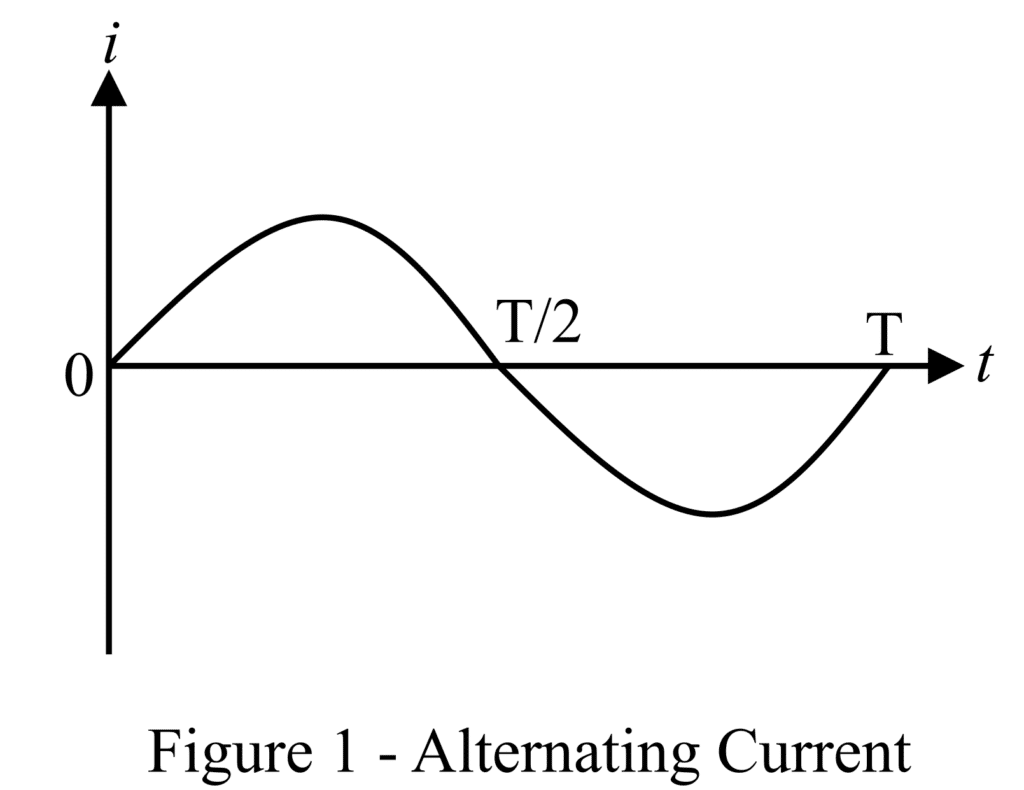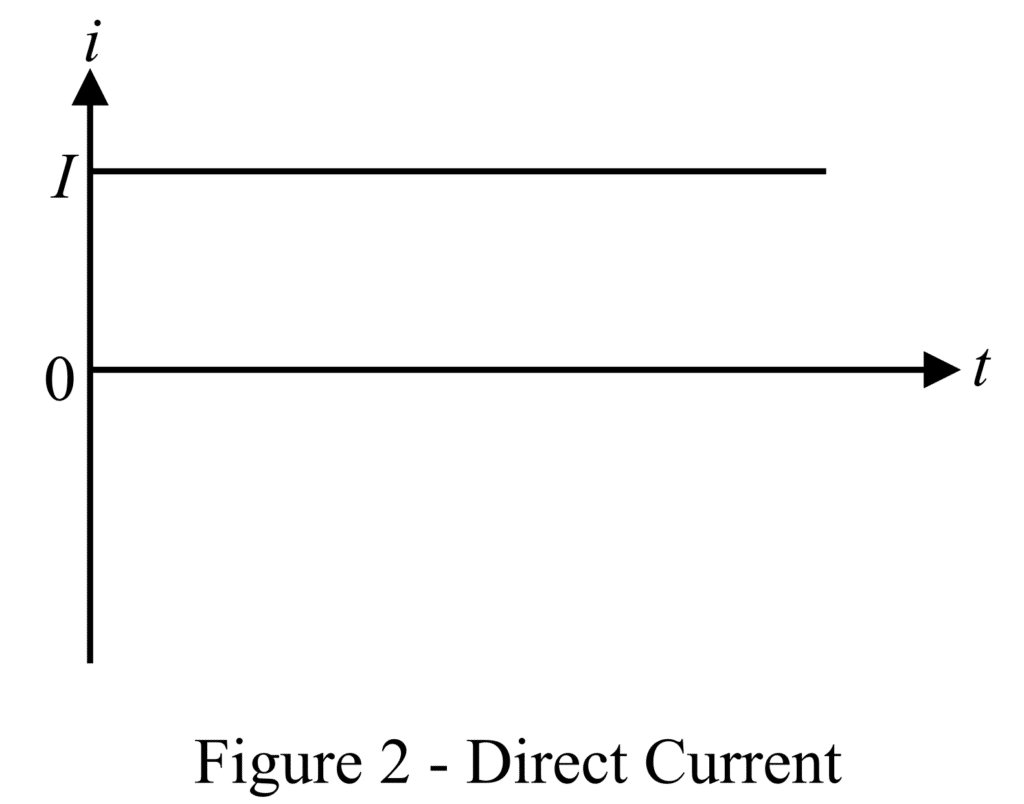This article describes the key differences between AC and DC. But before knowing the AC vs DC, first, we will learn the basics of electric current and its types namely alternating current and direct current individually for a better understanding of the differences between alternating and direct current.
The term electric current is defined as the continuous flow of electric charges or electrons between two given points across a conductor. Since its discovery in the early 1800s, the electric current has proved its importance in the world of electricity. And, now, electricity has become an essential part of our life. Based on the characteristics of electric current, it is broadly classified into the following two categories,
- Alternating Current (AC)
- Direct Current (DC)
What is Alternating Current (AC)?
Alternating current is defined as the type of electric current which changes its magnitude alternately between positive and negative values and its direction at fixed periodic intervals, throughout its time period.
The abbreviated form of alternating current is AC. Alternating current is used for long-distance transmission of power from power stations to residential areas due to its capability of converting from high voltage to low voltage values, thus taking into account safety issues. Additionally, the use of AC reduces the losses incurred in AC generators and motors and increases their efficacy and performance.
Alternating current is also described as the total number of cycles completed in one time period as shown in Figure 1. The time period is the time taken by a sinusoidal wave to complete one cycle. While frequency, which is also the reciprocal of the time period, is defined as the number of cycles generated by the alternating current waveform per second. The time period and frequency of the AC waveform are related by the following formula:


Depending on the shape of the alternating current waveform, AC can be of the following types:
- Sinusoidal wave
- Triangular wave
- Square wave
- Saw-toothed wave
What is Direct Current (DC)?
Direct current is described as the unidirectional flow of electric current across a conducting wire. In other words, direct current shows no fluctuations in direction or magnitude across the entire time period for a particular type of load, i.e. its magnitude remains constant across the entire time interval for a specific circuit and, the direction of current does not change.
The abbreviated form of direct current is DC. This means that the frequency, i.e. the number of fluctuations of the current per second is zero, as DC is just a straight line at a fixed value of current as shown in Figure 2. Direct current is used in various battery-operated devices such as PC, laptops, cell phones, remote control toy cars, etc. requiring short-distance transmission of power.

Depending on the nature of the DC waveform, it can be of the following two types:
- Constant DC – This type of DC current is the desired form of direct current con summed by various electronic devices where the current remains stable or the same.
- Pulsating DC – This type of DC current is utilized in most Pulse width modulated (PWM) device controllers, where there is a slight fluctuation in the DC signal, which can be smoothed out by using certain types of filters.
Difference between Alternating Current (AC) and Direct Current (DC)
The table below lists the important differences between alternating current and direct current –
| Parameter | Alternating Current | Direct Current |
| Definition | Alternating current is described as the alternating flow of current with fluctuations between positive and negative magnitudes of electric current across a specific time interval. | Direct current is defined as the low of current in one direction only, wherein the value and direction of the current flow remain the same. |
| Short form | The short-form representation of Alternating current is AC. | The short-form representation of direct current is DC. |
| Types | Alternating current can be a sinusoidal, triangular, square wave, or sawtoothed type of waveform based on their shape. | Direct current can be classified into two types viz. Constant and pulsating direct currents. |
| Change in direction and magnitude | AC observes a periodic change of directions between positive and negative values across the time period, with alternating positive and negative magnitudes of current as well. | DC observes no fluctuations in the direction of the wave and has a constant magnitude and direction. |
| Frequency of Current | AC waveforms have a frequency ranging between the values 50Hz and 60Hz. | DC waveforms have zero frequency values. |
| Bidirectional or unidirectional | AC waveforms are comprised of a bidirectional flow of electric chargers or current. | DC waveforms are comprised of a bidirectional flow of electric chargers or current. |
| Load types | AC is applied across resistive, capacitive, and inductive loads. | DC is applied only across resistors in an electronic circuit. |
| Resistance to current flow | The resistance offered to the flow of current in an AC circuit is termed impedance. | The opposition offered to the flow of current in an AC circuit is termed resistance. |
| Source of origin | Alternating current is produced by electric motors and generators. | Battery, generators, and solar cells produce direct current. |
| Range of transmission | Alternating current can be transmitted across long distances with minor power losses. | Direct current can be transmitted with high rates of efficacy across longer distances with lesser losses in comparison to AC transmission. |
| Transformer utilization | Alternating current values can be stepped up or down effectively by using the transformers. | Direct current values cannot be stepped up or down by using the transformers. |
| Power factor | The power factor of alternating current ranges between 0 and 1. | The power factor of direct current is always 1 or unity. |
| Applications | Alternating current is used to run numerous home and industrial appliances such as lights, fans, air conditioners, induction motors, generators, etc. | Direct current is utilized by various electronic devices like laptops, PCs, toys, hydraulic pumps, etc. |
Conclusion
In conclusion, this article describes the major differences between the alternating and direct current flow in electronic devices and how they are utilized for a variety of commercial and domestic purposes. The most significant difference between them is that AC involves the bidirectional flow of electric current, while DC involves the unidirectional flow of current. Overall, both AC and DC play an important role in the operation of various electric power systems.